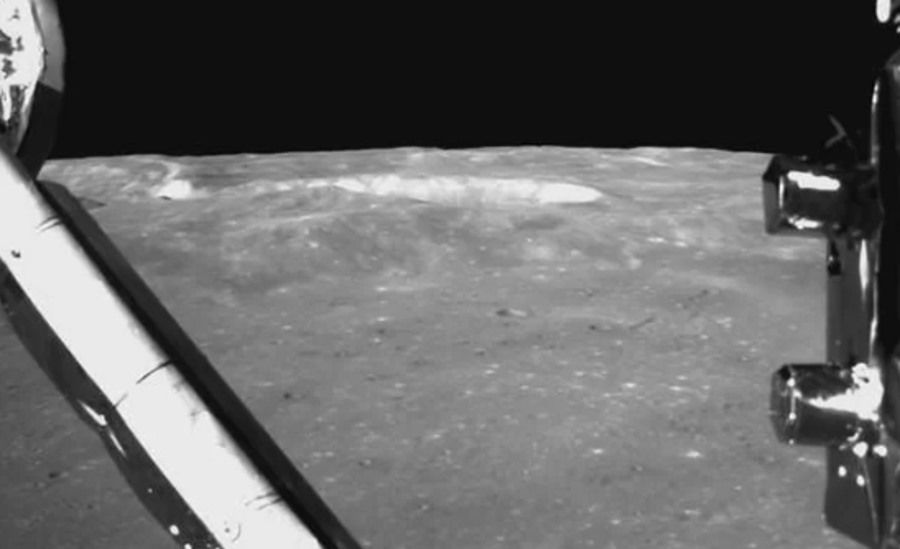
China has shown footage of the landing on the invisible side of the moon
The black-and-white footage begins with a view of the lunar landscape against the blackness of space. After about a minute, the camera rotates in doł showing dozens of small cratersow on the surface of the Moon. The entire video lasts less than three minutes and concludes with images of ktorych can see clouds of dust kicked up from under the settling lander.
The craft had to make the landing autonomously, as direct communication from the other side of the moon to Earth is impossible. China has solved the problem with the Queqiao satellite, ktory even before the mission was launched was sent into orbit of the moon.
The lander, along with the Jade rover Kroli 2 landed on January 3 in the Von K craterármáOn. The crater is part of a structure called the South Pole-Aitken Basin, one of the largest known impact structures in the entire Solar System and the oldest on the Moon.
CNSA has sent eight instruments to the moonoin scientific to study the structure and mineral composition of the surface of a part of the Silver Globe not visible from Earth. Research should shed some more light on the history of the Moon. Scientists believe that the landing site – a structure with a diameter of 2,500 kilometersoIn and depth of 13 kilometersow – is a key area thatory may provide answers to some important questions about the early history of our natural satellite, including its internal structure and thermal evolution.
The Chinese mission will also make observations of deep space from the invisible side of the Moon, where there are no man-made interferencesoradio shadow. This will help researchers learn more about the origins of the Solar System and even the birth of the first stars in the Universe.
Chang’e 4 will carry out roalso a biological experiment. On board the lander, scientists have placed a small can containing silkworm eggsow and potatoes. The eggs will hatch into silkworms, ktore will produce carbon dioxide, while potatoes will emit oxygen through photosynthesis. Together they are expected to create a simple ecosystem on the lunar surface. The goal of this experiment is to document how theob These organisms will thrive in a lunar environment with low gravity.
CNSA also released a 360-degree panoramic photo from the lander (shown below) showing the Jade Krolika 2 in the lunar landscape. The photo shows an area dotted with craters around theoł of the lander. NieroThe terrain’s gradients could be a challenge for the rover.

The rover has six koł, which allows it to continue working even if one wheel fails. It can travel at a maximum speed of 200 metersoin per hour. It can also climb to as high asorze with a slope of 20 degrees and overcome an obstacle up to 20 centimeters highow.
The Chang’e space program takes its name from the Chinese goddess of the moon. Currently, the surface of the Silver Globe is being explored by the fourth probe of this program. The previous one took place in 2013 and roalso explored the surface of the moon with a rover. Another one is scheduled to fly this year – the Chang’e-5, whichora has powroc to Earth from prob by the ground of our natural satellite.


